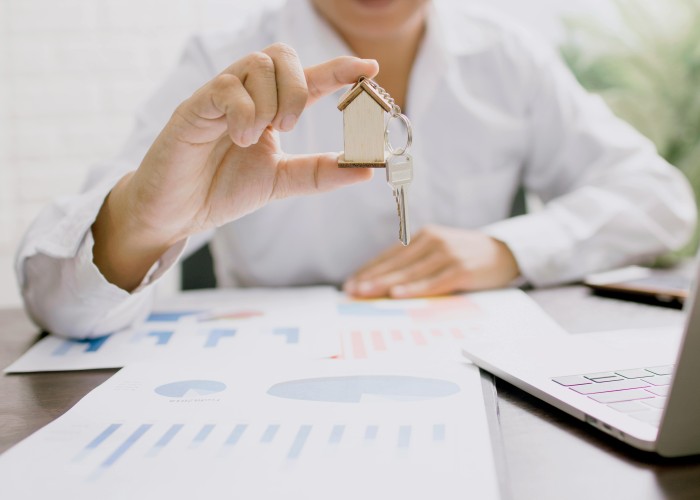When you’re planning to buy a home in the United States—whether it’s your first house, a property for sale, or even land for investment—you might come across the term PMI. It sounds technical, but it can have a significant impact on your monthly mortgage payments. What Is PMI in Mortgages and How to Avoid It.
This guide is here to simplify things. At US PROPERTY MARKET BLOG, we aim to provide useful, easy-to-understand information about the U.S. real estate market. We don’t sell property or offer real estate services—this is just an informative blog created to help you make better decisions.
Let’s break down what PMI is, why it exists, how it affects your finances, and most importantly, how to avoid paying it.
What Is PMI?
PMI, or Private Mortgage Insurance, is a type of insurance that your lender may require if you’re putting down less than 20% on a conventional home loan.
It protects the lender—not you—if you stop making your payments and default on the loan. Even though it’s an added cost to you, it helps lenders take on more risk by approving loans with smaller down payments.
Why Does PMI Exist?
PMI gives banks peace of mind. Statistically, borrowers with less equity in their homes are at a higher risk of default. So, PMI is a way to balance the risk. The lender gets insurance coverage, and the borrower gets access to a home they may not have been able to afford otherwise.
When Is PMI Required?
You’ll typically be required to pay PMI if:
- You’re taking out a conventional loan
- Your down payment is less than 20% of the home’s value
- You’re not using a government-backed loan like FHA or VA loans
So, if you’re buying one of the many homes for sale or houses for sale in the U.S. and you’re unable to put down 20% upfront, PMI becomes part of your monthly mortgage cost.
How Much Does PMI Cost?
PMI is not a one-size-fits-all number. It varies depending on several factors:
- Loan amount
- Credit score
- Down payment size
- Loan term
On average, PMI costs between 0.3% to 1.5% of your original loan amount annually. For example, on a $300,000 loan, PMI could cost between $900 and $4,500 a year, or roughly $75 to $375 per month.
How Is PMI Paid?
There are a few common ways lenders collect PMI payments:
- Monthly Premiums
The most common method. It’s added to your regular mortgage payment. - Upfront Premium
You pay it in full at closing—this can be helpful if you want lower monthly costs. - Split Premium
A combination of the two: a smaller upfront fee plus lower monthly payments.
Check with your lender to see which options are available. If you’re working on a property investment strategy, choosing the right payment method could help your cash flow. What Is PMI in Mortgages and How to Avoid It.
Why Should You Avoid PMI?
Paying PMI doesn’t help you build equity or improve your home. It simply protects the lender. That means it’s a cost without any direct benefit to you. Over time, PMI can cost thousands of dollars—money that could go toward upgrades, repairs, or future investments.
So, whether you’re purchasing commercial real estate or residential homes, avoiding PMI can save you significant money.
How to Avoid PMI
The good news? There are several smart ways to avoid PMI altogether. Let’s go through them.
1. Put Down at Least 20%
This is the simplest and most direct route. If you can afford a 20% down payment, PMI isn’t required. That’s one of the most reliable house buying tips experts give to avoid extra costs.
For example:
- Buying a $250,000 house?
- 20% down = $50,000
- Loan amount = $200,000
- No PMI needed
If you’re buying an investment property, planning ahead for this 20% can really pay off.
2. Use a Piggyback Loan (80-10-10)
If saving a full 20% is tough, a piggyback loan can help you get there.
How it works:
- First loan covers 80% of the home’s value
- Second loan (a home equity loan or line of credit) covers 10%
- You pay the remaining 10% as a down payment
While you still make two loan payments, this setup can avoid PMI entirely. However, it’s crucial to weigh the interest rates and fees of the second loan.
3. Look for Lender-Paid PMI (LPMI)
Some lenders offer what’s called Lender-Paid PMI. Instead of charging you monthly PMI, they give you a higher mortgage interest rate and cover the PMI cost themselves.
Pros:
- Lower monthly mortgage payments
- Simpler payment structure
Cons:
- You may pay more interest over time
- It can’t be canceled later
If you’re considering this, weigh the long-term cost difference—especially if you’re looking at long-term property investment.
4. Use a VA Loan (If Eligible)
VA loans, offered to U.S. military veterans and active-duty service members, require no PMI, even with zero down payment. While not available to everyone, it’s one of the best options for those who qualify.
5. Choose an FHA Loan Cautiously
FHA loans have their own type of mortgage insurance (called MIP), which can be more expensive than PMI and harder to remove. So, if your main goal is to avoid ongoing insurance costs, FHA might not be your best bet—especially for property investment advice.
Can You Remove PMI Later?
Yes, and this is where planning pays off.
PMI Can Be Canceled When:
- Your loan balance drops below 80% of your home’s original value
- You reach 78% loan-to-value automatically—lenders must remove it by law
- You refinance your mortgage and have 20% equity in the new loan
- You pay down the principal faster through extra payments
Be sure to contact your lender and request PMI cancellation—it’s not always automatic.
Smart Property Investment Tips Regarding PMI
If you’re investing in real estate or rental properties, paying PMI eats into your profits. Consider these tips:
- Increase your down payment to preserve rental income
- Refinance early if the property value goes up quickly
- Track your loan-to-value ratio so you can cancel PMI ASAP
- Buy in appreciating neighborhoods where home values rise faster
These are actionable property investment tips that help you maintain healthy returns and lower your holding costs.
House Buying Advice: Think Long-Term
Whether you’re exploring homes for sale, land for sale, or your dream condo in the city, keeping your costs low over time is key. Here’s some general house buying advice when dealing with PMI:
- Always ask lenders upfront about PMI costs and removal options
- Plan your down payment strategy ahead of time
- Think about your long-term stay: if you’ll sell within a few years, PMI might be worth it short-term—but not always
- Use home selling tips and tips for staging home to sell effectively if you’re planning to flip or resell
Commercial Real Estate and PMI
PMI usually applies to residential real estate. However, if you’re investing in commercial real estate, lenders often require higher down payments—20% to 30%—so PMI rarely comes into play. What Is PMI in Mortgages and How to Avoid It.
Still, the principle is the same: the more equity you have upfront, the lower your financial risk and long-term costs.
Final Thoughts
PMI is one of those hidden costs in home buying that many people overlook. But with the right strategy, you can avoid it—or at least minimize its impact on your budget. Understanding how PMI works gives you an edge, especially if you’re looking at real estate from a long-term investment angle.What Is PMI in Mortgages and How to Avoid It.







Leave a Reply